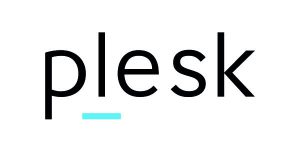 We’re often asked how people can improve their English web content. Of course, the answer is to have an English editor proofread it for you, which is why we’re here! However, that’s not possible for everybody, so here are 5 tips to improve your English content today, including something especially for Dutch speakers!
We’re often asked how people can improve their English web content. Of course, the answer is to have an English editor proofread it for you, which is why we’re here! However, that’s not possible for everybody, so here are 5 tips to improve your English content today, including something especially for Dutch speakers!
1. Print your copy to proofread it.
There’s something about reading content you’ve just written from a screen. It’s still very fresh in your mind, plus reading from a screen encourages you to skim the words rather than read them, so mistakes are often missed. So print your copy onto paper, take them away somewhere with a pen and a cuppa and read it again with fresh eyes. You’ll notice far more that way. We’ve written about this in more detail on our blog: If you want to proofread your text, print it!
2. Beware of local sayings that don’t translate well.
If you’re using English to appeal to a global audience, be aware that using sayings that are only used in your native language will be confusing to speakers of other languages who may also be coming to it as their second language. Good examples of this are:
- Making an elephant out of a mosquito
- Now the monkey comes out of the sleeve
- To have hair on one’s teeth
Dutch speakers may know what these mean, however the rest of us are left scratching our heads…
3. Put sentences the right way round.
To use an English phrase, ‘don’t put the cart before the horse’. In other words, make your point then explain it afterwards. So, for example, instead of saying: ‘To build yourself a WordPress website you must first get a hosting package’, a better way of putting this would be: ‘You must get a hosting package before you can build a WordPress website.’ This may seem obvious but we have seen some otherwise very good writers make this mistake.
4. Be short and to the point.
When you review your own content you’ll be surprised by how often you repeat yourself, saying the same thing in different ways. Don’t be afraid to chop these repetitions out for clarity. Also, beware of directly translating from other languages, as French, for example, can be overly formal and wordy, and German can often over-explain things. In English, it’s better to find the shortest way to express your idea to keep the reader’s interest.
5. Beware the question mark!
Before you use a question mark, ask yourself: ‘Is this actually a question, or is it a statement?’ Never put a question mark at the end of a statement, even if it sounds like a question. This is tricky, but you can read more in our post: When to use a question mark in English.
Find us at WordCamp Utrecht if you want to know more about ways to improve your copy or if you have any content you would like our help with.
 Quickly integrate all major payment methods in WooCommerce, wherever you need them. Simply drop them ready-made into your WooCommerce webshop with the powerful plugin by
Quickly integrate all major payment methods in WooCommerce, wherever you need them. Simply drop them ready-made into your WooCommerce webshop with the powerful plugin by 
 Plesk has created the ultimate tool for WordPress devs, designers, agencies and IT admins to manage sites and apps. The
Plesk has created the ultimate tool for WordPress devs, designers, agencies and IT admins to manage sites and apps. The  Eagerly 💗 Utrecht
Eagerly 💗 Utrecht Level Level is een
Level Level is een 





